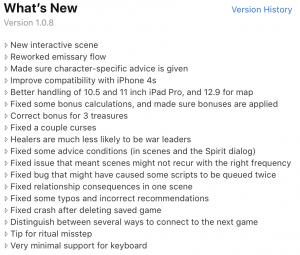
We just released a new version of “Ride Like the Wind” on the iOS App Store. A lot of the changes are fixes for bugs reported by players. (As a reminder, we want to hear about problems no matter how you tell us, but our FAQ explains the best way to send in reports.) Other changes came about because we’re working on a sequel and a port.
Developing a sequel means reusing as much of the game as possible. This can mean extra scrutiny as part of the code is made a little more general-purpose, or just because we’re running it in a different context.
Developing a port makes you play the entire game again looking for bugs. Sometimes the bugs are in the game itself, not in the new code of the port.
I try to avoid the typical “Bug fixes and performance improvements” in the update notes and explain what you’re actually getting. But even with a thorough list of changes, I thought it might be interesting to go into a little more detail. This is, after all, a development blog, so I’ll share more of what goes on behind the scenes. (A few of the changes don’t have any particular explanation, so are not mentioned here.)
New interactive scene
While working on “Lights Going Out,” we were discussing how clans relate to each other, and I realized there was a common way missing. I got this working in the new game, then made a similar scene for the first one.
Reworked emissary flow
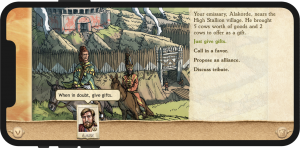
The upcoming game will let you send emissaries for new purposes. On one hand, we didn’t need to change “Ride Like the Wind.” On the other, we were working on a port, so why not make the change once (before the dialog was ported)? The original approach was a little inconsistent if you were dealing with feuds, so the new flow gets rid of that rough edge. It’s also an opportunity to show more advice.
Improve compatibility with iPhone 4s
One player was using the smallest possible phone. The experience is still not optimal, but it’s a little better now.
Better handling of 10.5 and 11 inch iPad Pro, and 12.9 for map
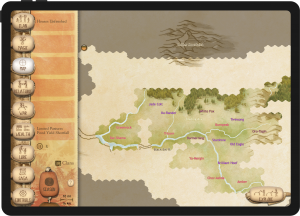
The 11 inch iPad Pro didn’t exist when we were working on the previous version. Our original design was for the 9.7 inch iPad. Although the UI is adaptive, some of the art was designed for a specific aspect ratio. And, the newer devices also have safe areas for rounded edges or system UI.
Correct bonus for 3 treasures
I found some inconsistent coding while looking for how to best implement a “Lights Going Out” treasure. To make sure it doesn’t happen again, I added a unit test.
Fixed a couple curses
Cursing another clan had different effects in different scenes. The same curse is now consistent wherever you choose it.
Healers are much less likely to be war leaders
I also fixed a bug that occurred if a healer happened to be the best war leader. At the time of battle, the game picks an available person with good leadership as well as good combat. That may be strictly logical, but it’s not plausible that someone devoted to the peaceful healing goddess Erissa would direct warriors to attack.
Fixed bug that might have caused some scripts to be queued twice
This one was player-reported, a very rare combination of events.
Fixed some typos and incorrect recommendations
This was probably the most commonly reported category. Again, thanks to everyone who pointed them out.
Fixed crash after deleting saved game
This was probably the most benign crash possible (the app did delete the saved game), but also one of the more commonly reported ones. It was also hard to figure out exactly what was going on. I tried to fix it several times, but finally figured out a way to reproduce the crash and fixed it.
Distinguish between several ways to connect to the next game
Now that we actually have the next game in development, we’re working on making it meaningful that you played the first game (while at the same time making sure players can begin with the second chapter and not feel left out). There were some copy-paste errors that could have affected a few of the story paths.
Tip for ritual misstep
Another context-sensitive note about how unpredictable the Gods War is seemed appropriate.
Very minimal support for keyboard
The Windows and Mac version supports keyboard input. The level of support isn’t as strong, but if you happen to have a keyboard attached to your iPad, you can use it in a few places.
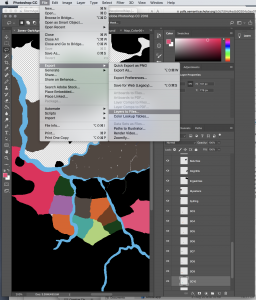 I draw each zone as a separate layer in Photoshop, giving it the name of the zone. Then I use File > Export > Layers to Files to create separate PNG files. I actually do this twice, once to create trimmed images that can be used for hit-testing, the second to get the metrics of each zone. The command takes nearly 9 minutes to run on a recent MacBook Pro.
I draw each zone as a separate layer in Photoshop, giving it the name of the zone. Then I use File > Export > Layers to Files to create separate PNG files. I actually do this twice, once to create trimmed images that can be used for hit-testing, the second to get the metrics of each zone. The command takes nearly 9 minutes to run on a recent MacBook Pro.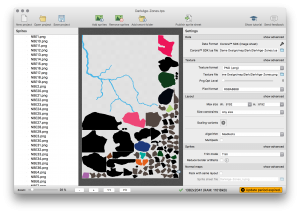 The untrimmed images are each 1500 x 1375 pixels (in the case of “Ride Like the Wind”). I feed these through
The untrimmed images are each 1500 x 1375 pixels (in the case of “Ride Like the Wind”). I feed these through 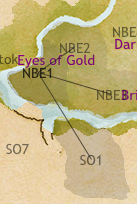 To help edit this, there’s a special debugging mode which shows the connections. There’s some sanity checking code for this too, though it’s mostly a manual process.
To help edit this, there’s a special debugging mode which shows the connections. There’s some sanity checking code for this too, though it’s mostly a manual process.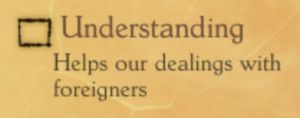 I’ve
I’ve  While we plan to support other platforms, we are currently using
While we plan to support other platforms, we are currently using 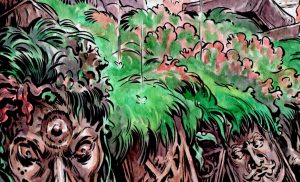 Six Age has a lot of art, and it’s almost all complete. I just sent out the final assignment today. We may still do a little reworking of illustrations and UI assets, but technically what’s there now could ship.
Six Age has a lot of art, and it’s almost all complete. I just sent out the final assignment today. We may still do a little reworking of illustrations and UI assets, but technically what’s there now could ship. We’ve been working with
We’ve been working with 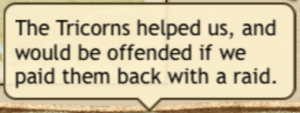 Advice about raiding-related promises currently shows up in the War screen, but if you go to the Raid screen, it doesn’t. As a player I’d be more likely to expect to see it in the Raid screen and would entirely miss it in the War screen.
Advice about raiding-related promises currently shows up in the War screen, but if you go to the Raid screen, it doesn’t. As a player I’d be more likely to expect to see it in the Raid screen and would entirely miss it in the War screen.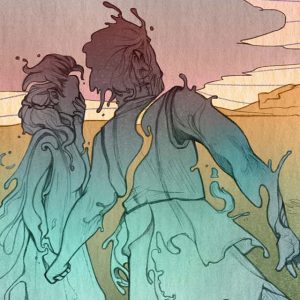 Tonight I received the final two pieces in the “otherworld” art style.
Tonight I received the final two pieces in the “otherworld” art style.